
copyright © Wartime Heritage Association
Website hosting courtesy of Register.com - a web.com company
Wartime Heritage
ASSOCIATION
Remembering World War II
The Loss of Flight T9449


At 8 pm on February 20, 1941, Lockheed Hudson III Flight T-9449 took off from the Gander, Newfoundland airport. Aboard were a
crew of three: Captain Joseph Creighton Mackey (Pilot) of Kansas City, Missouri, Flying Officer William Bird (Navigator) of England,
and William Snailham (Co-Pilot and the Wireless Radio Operator), a civilian from Bedford, NS. The sole passenger was Major Sir
Frederick Grant Banting. England was the intended destination.
The Ferry Command Program, where airplanes were purchased in
the United States and then delivered to the Royal Air Force, was
in its infancy and Banting was the second passenger to cross the
Atlantic using this service. Major Banting, Nobel Prize in
Physiology or Medicine winner in 1923 as co-discoverer of insulin
in 1922, was Canada’s chief liaison with British research scientists
in the early days of WWII. He decided to make another trip to
England, and arranged to obtain a ride on one of the Hudson
bombers being ferried from Newfoundland to the UK.
Not long after take-off, the radio operators on other aircraft, and
the personnel at Gander heard Bill Snailham, T-9449’s radio
operator, asking for directions back to the Gander airport. The
directions were received but the plane never made it back. The
Lockheed Hudson bomber crash landed on Seven Mile Pond (now
Banting Lake) approximately 10 miles south Musgrave Harbour. Radio Operator William Snailham and Flying Officer William Bird, who
served as navigator, died on impact. Pilot Joseph Mackey and Major Banting were knocked unconscious. Mackey awoke first, tended
to Banting wound. Some have suggested it was Banting who awoke first, tended to Mackey’s wounds and then again fell unconscious.
What can be confirmed is that while Banting was unconscious, Mackey left to find help. When he returned, he found Banting metres
away from the aircraft, dead in the snow. Banting had succumbed to his injuries on February 21st.
Newfoundland residents Tobias Mouland, Dalton Abbott, Harold Hicks, and Walter Hicks were nearing the tail-end of a week-long rabbit
hunting trip, 10 miles west of Musgrave Harbour near Seven Mile Pond, when they were startled by an aircraft flying directly
overhead. The plane, which by now was circling the hunters, was attempting to draw their attention. Soon thereafter, large pieces of
paper fell from the sky - the aircraft was dropping notes to the four men, stating that a plane had crashed one mile from where they
stood and that assistance was needed for a possible rescue, as at least one man had survived.
The four men immediately followed the path of the overhead aircraft, leading them to the crash site. Arriving at the crash site, the
hunters found the pilot Joseph C. Mackay draped in a sleeping bag and propped up against a rock. The sleeping bag and chocolate bars
had been dropped by the rescue plane earlier in the day. Realizing that Mackay would need medical attention, they prepared to pull
him by sled back to Musgrave.
By then, the search plane had dropped notes over the town of Musgrave Harbour, informing locals of the crash. Rescue parties were
arranged and departed for the crash site to recover those who had died. Pilot Mackay was brought to a home in Musgrave, where a
local nurse had set up a clinic, and was given medical attention. He would recover after three days and was then readied to be
airlifted to Gander. The bodies of three who had perished in the crash were brought back to the Orange Lodge in Musgrave Harbour
and laid to rest until arrangements were made for their return home.
Captain Mackey, a native of Kansas City, Missouri, would be invited back to Musgrave Harbour in 1971 as a guest of the town. After the
festivities, Mackey was flown by helicopter to the site where he had crashed 30 years earlier where the Hudson was as he had left it
on that cold day in February of 1941.
The RCAF hospital in Gander was renamed Sir Frederick Banting Memorial Hospital in late 1941. In 1990, an Interpretation Centre was
built in Banting Memorial Municipal Park, 2 miles east of Musgrave Harbour, to display the artifacts of the crash, and the wreckage
from the crash was airlifted and placed outside the Centre. In 2001, a replica of the Hudson bomber was unveiled outside the Centre.
Banting Lane in Musgrave Harbour, where the Orange Lodge still stands, was named in Dr. Banting’s honor.
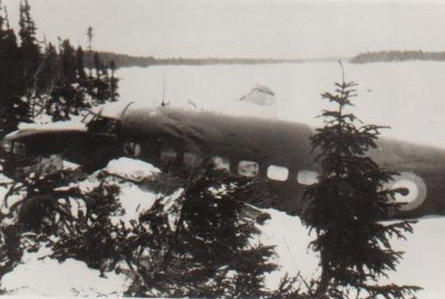
________________________________________
Name:
William Snailham
Role:
Civilian (Wireless Radio Operator)
Service Number:
Not applicable
Service:
Ferry / Transport Command, Royal Air Force
Date of Birth:
Summer 1903 (July/Aug/Sep)
Place of Birth:
Chorley just south of Preston in Lancashire, England
Date of Death:
February 21, 1941
Age:
37
Cemetery:
Halifax (Fairview Lawn) Cemetery, Nova Scotia
Grave:
Section 1, Lot 193C
Commemorated on Page 609 of the Second World War Book of Remembrance
Displayed in the Memorial Chamber of the Peace Tower in Ottawa on December 26 and 27
William Snailham was the son of and husband of Viola Bertha (Adams) Snailham (1911-1936). Viola was born in July 28, 1911 in
Halifax, NS; the daughter was George Albert Adams and Louise May (Webster) Adams of Colchester Co., NS. William and Viola had two
daughters; Viola and Gloria Louise Snailham (1930-1956) and a son William Roy Snailham (1932-2005).
According to family history, he moved to Bedford, NS shortly after the First World War. William Snailham was a radio operator by
occupation, having worked on numerous ships, and for a short time in the military. He also worked for the Canadian National Railway
(CNR) as a radio operator. For some time, he served aboard the Lady Nelson.
The earliest record of William travelling from England to Canada was a 16-year-old passenger (he lists Telegraphist as his trade) aboard
the Haverford departing Liverpool, England on June 23, 1920 for Halifax, NS.
By February and July 1924, he is serving aboard the SS Canadian Spinner.
He then spends much of his career at sea aboard the RMS Lady Nelson; records from show him aboard the Lady Nelson as early as
November of 1932 and at least until January of 1939.
By April 1939 he was serving aboard the MV Victolite as WTO (Wireless Telegraph Operator) and indicated he had been serving at sea
for 18 years which would mean he started working in 1921.
In December 1940 he is serving as the Wireless Operator from Liverpool to Halifax on the SS Tetela.
William Snailham was the radio operator aboard the plane, apparently a friend of the pilot - Joseph Mackey. According to a family
account Mackey was a perfectionist, and considering the importance of his passenger, wanted the best crew he could find, which
included William Snailham. The plane was flown from Winnipeg, and on to St Hubert, near Montreal. At this point, the crew, including
Snailham, took control of the plane and Banting joined them in Montreal.
After the February 21, 1941 crash, William Snailham was
interred in the Fairview Lawn Cemetery in Halifax.
Sources:
Canadian Virtual War Memorial
http://www.geocities.ws/scottsnailhamhomepage/sfh.html
________________________________________
Name:
William Bird
Rank:
Flying Officer (Navigator)
Service Number:
79749
Service:
Royal Air Force Volunteer Reserve
Date of Birth:
November 18, 1915
Place of Birth:
St George’s Parish, Kidderminster, Worcestershire
Date of Death:
February 21, 1941
Cemetery:
Halifax (Fort Massey) Cemetery, Nova Scotia
Grave:
Section E, Grave 128
William Bird was the only son of Florence Bird of Gretton, Gloucestershire. From
the age of nine, he lived in Cheltenham (9 miles south of Gretton).
William married Gertrude Ann Haslum (1910-1993) in 1939 in Cheltenham. At the
time of his death, his wife was living in Evesham Road, Cheltenham, with her
parents Mr. Frederick M Haslum (1873-1951) and Mrs. Louisa (Humphries/Humphris)
Haslum (1874-1950).
William Bird had one child, a son, who was just over one when his father died.
After his body was transferred to Halifax , a service was held at St. Paul’s Anglican
Church. An Air Force band and the party escorted the lorry through Halifax streets
while hundreds of civilians watched. The cap of an RAF officer was placed atop the
Union Jack draped over the coffin. The firing party poured three volleys into the sky at the grave while the band rendered ‘Abide
with Me’. Two Air Force buglers rippled the March air with The Last Post and he was interred at the Fort Massey.
Sources:
Commonwealth War Graves Commission
https://www.worcesternews.co.uk/news/7664485.the-mystery-of-flight-t-9449/
https://www.worcesternews.co.uk/news/7658890.town-sleuths-end-10-year-quest-for-info/
________________________________________
Major Sir Frederick Grant Banting was born November 14, 1891, the youngest of six
children of William Thompson Banting and Margaret (Grant) Banting. As a medical
student, his last year in was condensed due to the urgent need for doctors in WWI. He
enlisted in the Canadian Army Medical Corps, initially working in military hospitals in
England which sparked his interest in surgery and research. In the summer of 1918, he
was sent to France as a battalion medical officer. He saw heavy action in the last great
battles of the war. His posting in France ended when he was wounded by shrapnel at
Cambrai in September. He recovered in England, received the Military Cross for his
valour under fire, and returned to Canada in 1919.
Sources:
Canadian Virtual War Memorial
Banting House National Historic Site of Canada
Gander Heritage Trails


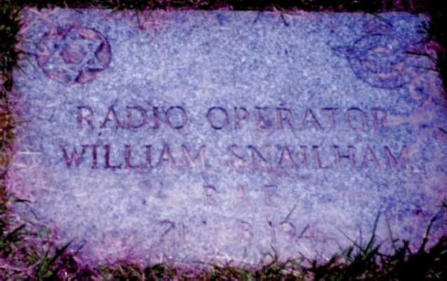
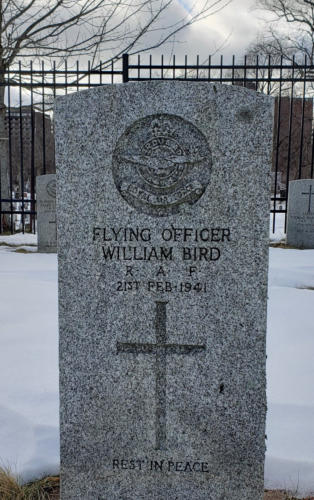
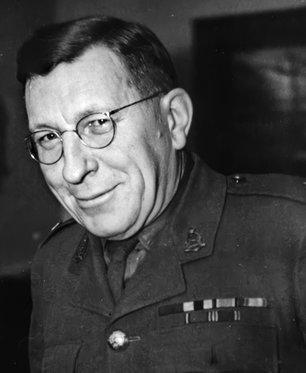
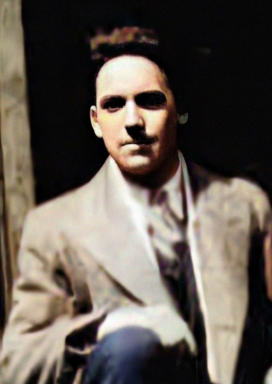


- World War I - Menu
- WWI Stories and Articles
- Photos - Yarmouth Soldiers
- Selection of World War I Songs
- WWI Casualties of Yarmouth, NS
- Those Who Served - Yarmouth, NS
- WWI Casualties Digby Co. NS
- WWI Casualties Shelburne Co. NS
- Merchant Mariners (1915) Yarmouth, NS
- Canadian Forestry Corps - Non Yarmouth Birth/Residence Enlistments
- US Draft Registry - Yarmouth NS Born


- World War II - Menu
- WWII Stories and Articles
- Telegraphist Air Gunners
- WWII Casualties of Nova Scotia
- US Casualties with NS Connection
- Far East/Pacific Casualties with NS Connection
- Merchant Navy Casualties Nova Scotia
- Nova Scotia WWII Casualties Holten Canadian War Cemetery
- D-Day Casualties - Nova Scotia
- CANLOAN Program Casualties - Nova Scotia
- Battle of the Bulge Casualties - Nova Scotia
- WWII Casualties Yarmouth NS
- Yarmouth Casualties - RCAF RAF Canadian Army WWII
- Yarmouth Co., Marriages WWII
- Casualties Non-Born/Residents with Connection to Yarmouth Co., Nova Scotia.
- WWII Casualties Digby Co., NS
- Non-Nova Scotian WWII Casualties Buried in Nova Scotia
- WWII RCAF Casualties Aged 16-18
- Brothers/Sisters Who Served - World War II













